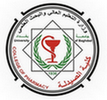The Faculty of Pharmacy discussed the Ph.D thesis tagged (Formulation and In vitro/In vivo Evaluation of 6-Mercaptopurine Electrospun Nanofibers as a Capsule Dosage Form for Oral Drug Delivery) for the student in the Pharmaceutics Department, Ahmed Abdul Kareem Abdul Abbas Alsaad, and his supervisor, Professor Dr. Ahmed Abbas Hussein. The objectives of the thesis were to increase the solubility and bioavailability of 6-mercaptopurine by formulating it as a nanofiber. The thesis included the use of an electrospinning technique for the production of 6-mercaptopurine nanofiber by using different ratios of polymers such as PVP K60 and PEO. This study also includes determining the diameter of nanofiber by using scanning electron microscopy. Both differential scanning calorimetry and X-ray powder diffraction were used to determine the compatibility of the drug with polymers. In vitro dissolution studies was done to determine the rate of dissolution of 6-mercaptopurine nanofiber. Studies of the pharmacokinetics of a pure 6-MP, selected formula (F5), and the commercial formulation (Puri-nethol®) were done using laboratory male rats. Loading efficiency and electrospinning yield were affected by polymer concentration during the optimization process, as well as nanofiber diameter. The concentration of polymer also affected both the number of beads formed and the amount of the drug release. Poly (vinyl pyrrolidone) negatively affected the electros pun yield, whereas poly ethylene oxide (PEO) positively affected the yield, but the content of PVP in the prepared formulas largely controlled the rate of dissolution and loading efficiency. In addition to reducing the diameter of the fibers, the increased polymer concentrations had a positive impact on reducing the number of beads. Scanning electron microscopy was used to identify nanofibers diameter, morphology, and characteristics of its surface .In vitro dissolution studies indicates about 68 ± 4.16 % release in less than 2 minutes in HCl solution medium (pH 1.2) and about 73 ± 3.27 % in buffer medium (pH 6.8) compared to a negligible amount released from physical mixture and free drug. Both differential scanning calorimetry and X-ray powder diffraction suggested loss of 6-mercaptopurine crystallinity upon formulation, indicating that the drug may be converted into an amorphous state, which may have contributed to the enhanced drug dissolution properties. The studies of the pharmacokinetics of a pure 6-MP, selected formula (F5), and the commercial formulation (Puri-nethol®) were done using laboratory male rats. The concentration of drug in the plasma was detected by HPLC method. The nanofiber produced a significantly higher plasma concentration of 6-MP (Cmax = 11.09 ± 1.94) compared to that of the commercial dosage form (Cmax = 2.72 ± 0.72) and pure drug (Cmax = 0.91 ± 0.37) in the first 30 minutes after oral administration.


